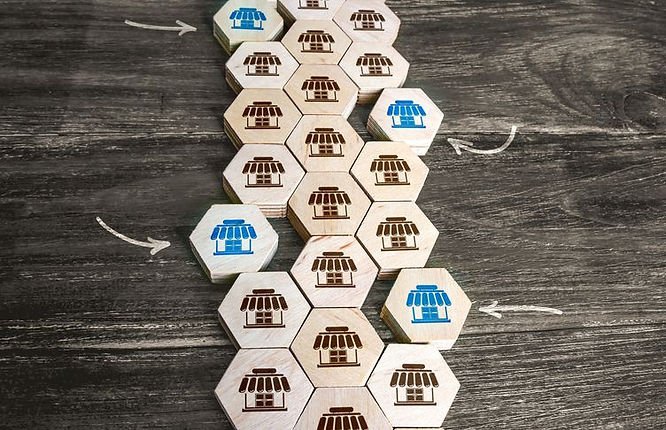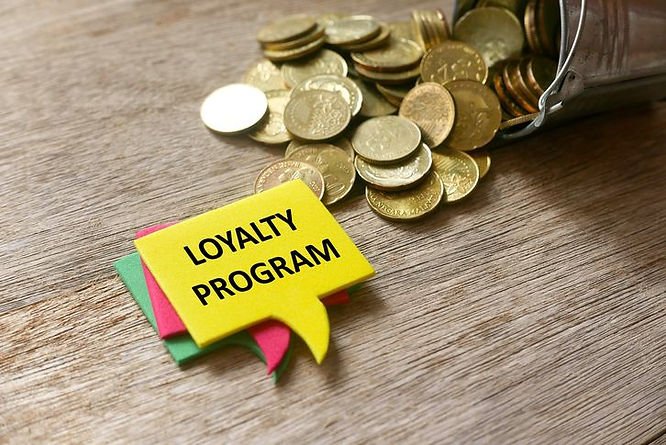Creating a successful e-commerce customer loyalty program is essential for fostering long-term relationships with your customers, and driving repeat business. By taking a strategic and data-driven approach, you can design a program that not only appeals to your target audience but also strengthens your brand reputation. In this guide, we will outline key steps to help you develop an effective and engaging loyalty program that enhances customer satisfaction and supports sustainable business growth. For this purpose, we recommend you 10 crucial steps to do.
10 Steps To Create A Successful E-commerce Customer Loyalty Program
- Define your objectives: Start by outlining the goals of your loyalty program, such as increasing average order value, boosting customer retention, or encouraging word-of-mouth referrals.
- Research your target audience: Understand your customers’ preferences, needs, and pain points. Use this information to create a loyalty program tailored to their interests and expectations.
- Choose a program structure: Select a structure that best suits your business and target audience. Popular options include point-based systems, tiered programs, cashback, and subscription-based models.
- Create enticing rewards: Offer tangible and intangible rewards that appeal to your customers. Examples include discounts, free products, exclusive offers, and early access to new products. Make sure the rewards are attainable and valuable to the customer.
- Personalize the experience: Use customer data to tailor your loyalty program to individual preferences. Send personalized emails, offer product recommendations, and create a seamless online experience.
- Leverage technology: Implement a user-friendly platform to manage your loyalty program. This can include a mobile app, a responsive website, or integration with third-party tools for rewards and referrals.
- Promote your program: Use various marketing channels to inform customers about your loyalty program. Include information on your website, in email campaigns, on social media, and any physical packaging or promotional materials.
- Monitor and analyze data: Track key performance indicators (KPIs) such as customer retention rate, average order value, and reward redemption rate. Use these insights to refine your program and make data-driven decisions.
- Encourage customer feedback: Actively seek feedback from your customers to identify areas for improvement. Listen to their suggestions and make necessary adjustments to optimize your loyalty program.
- Continuously evolve: A successful loyalty program requires regular updates and improvements. Stay current with industry trends and customer expectations to ensure your program remains competitive and effective.
Following these steps, you can develop a customer loyalty program that drives customer retention, increases sales, and fosters long-term relationships.
Define Your Objectives

Starting with a clear set of objectives is crucial for developing a successful e-commerce customer loyalty program. By pinpointing the primary goals of your program, such as increasing average order value, boosting customer retention, or encouraging word-of-mouth referrals, you can create a targeted and strategic approach that aligns with your business needs. In this guide, we will explore the importance of defining your objectives and provide a step-by-step process for designing a customer loyalty program that achieves these goals and drives sustainable business growth.
Assess Your Current Business Performances
Analyze your current sales, customer retention rates, and referral rates to identify areas where a loyalty program can have the most significant impact.
Prioritize Your Objectives
Determine which goals are most important for your business and focus on those when designing your loyalty program.
Research Industry Benchmarks
Study the loyalty programs of competitors and other successful e-commerce businesses to understand what works well and what may not be as effective.
Develop Specific Measurable Goals
Set clear, quantifiable targets for each objective, such as increasing average order value by 15% or boosting customer retention by 10% within a certain timeframe.
Design Your Loyalty Program Around Your Objectives
Tailor the program’s structure, rewards, and marketing to effectively address your prioritized objectives.
Implement And Monitor Progress
Launch your loyalty program and regularly track its performance against your specific goals, adjusting as needed to optimize results.
Review And Revise Your Objectives Periodically
As your business evolves, revisit your loyalty program objectives to ensure they continue to align with your current needs and priorities.
Defining your objectives from the outset is an essential foundation for creating a successful e-commerce customer loyalty program. By establishing clear goals and designing your program to address these objectives, you can foster long-lasting customer relationships, drive repeat business, and ultimately, boost your bottom line. Remember to consistently monitor and adjust your program as needed to ensure its continued success and alignment with your evolving business goals.
Research Your Target Audience

Researching and understanding your target audience is a critical component of developing a successful e-commerce customer loyalty program. By gaining insights into your customers’ preferences, needs, and pain points, you can create a loyalty program that is tailored to their interests and expectations, ultimately driving engagement and retention. In this guide, we will discuss the importance of researching your target audience and provide a step-by-step process for gathering valuable customer insights to design a loyalty program that resonates with your customers and supports long-term business growth.
Analyze Customer Data
Review your existing customer data, including purchase history, demographics, and browsing behavior, to identify trends and patterns that can inform your loyalty program strategy.
Conduct Surveys And Interviews
Reach out to your customers directly through surveys and interviews to gather their feedback and learn more about their preferences, motivations, and expectations for a loyalty program.
Monitor Customer Reviews And Feedback
Regularly review customer comments on your website, social media, and third-party review platforms to gain insights into their experiences, concerns, and satisfaction levels.
Create Customer Personas
Develop detailed customer personas based on your research to help guide the design and communication of your loyalty program.
Segment Your Audience
Divide your customer base into distinct groups based on shared characteristics, such as demographics or purchasing behavior, to better target and tailor your loyalty program offerings.
Test And Refine Your Program
Use A/B testing or pilot programs to test different loyalty program elements with various customer segments, refining your approach based on the results.
Researching and understanding your target audience is vital for creating a customer loyalty program that truly resonates with your customers and drives engagement. By gathering valuable insights into your customers’ preferences, needs, and pain points, you can tailor your program to their interests and expectations, ultimately fostering stronger relationships and boosting customer retention. Remember to continually monitor customer feedback and adjust your program as needed to ensure its ongoing success and alignment with your audience’s evolving needs.
Choose A Program Structure

Choosing the right program structure is essential for the success of your e-commerce customer loyalty program. The structure you select should align with your business objectives and cater to the preferences and expectations of your target audience. Popular loyalty program structures include point-based systems, tiered programs, cashback, and subscription-based models. In this guide, we will discuss the importance of selecting the appropriate program structure and provide a step-by-step process for evaluating and implementing the structure that best suits your business and customers, ultimately driving engagement and retention.
Assess Your Business Model
Evaluate your business model, product offerings, and pricing to determine which loyalty program structure is most compatible with your unique selling proposition and target audience.
Review Your Customer Research
Revisit the insights gathered during your target audience research to understand which program structure is most likely to resonate with your customer’s preferences and motivations.
Evaluate The Pros And Cons
Consider the advantages and disadvantages of each program structure, such as ease of implementation, cost, customer appeal, and alignment with your business objectives.
Analyze Competitor Programs
Examine the loyalty programs of your competitors and similar businesses to identify trends, best practices, and potential gaps that your program could fill.
Select Your Program Structure
Choose the loyalty program structure that best meets your business goals and target audience preferences, considering your findings from the previous steps.
Develop And Refine Your Program
Design the details of your chosen program structure, such as point values, reward tiers, cashback percentages, or subscription benefits, and refine it based on customer feedback and performance metrics.
Continuously Optimize
Monitor the performance of your loyalty program structure and make adjustments as needed to ensure its ongoing effectiveness and alignment with your customers’ evolving needs.
Selecting the right program structure is a critical factor in the success of your e-commerce customer loyalty program. By carefully evaluating the options and choosing a structure that aligns with your business objectives and targets audience preferences, you can create a program that drives customer engagement, fosters long-term loyalty and supports sustainable business growth. Remember to continually monitor the performance of your loyalty program and adapt your structure as needed to ensure it remains relevant, appealing, and effective for your customers.
Create Enticing Rewards

Creating enticing rewards is a key component of a successful e-commerce customer loyalty program. By offering a mix of tangible and intangible rewards that appeal to your customers, you can encourage them to engage with your program and make repeat purchases. Examples of enticing rewards include discounts, free products, exclusive offers, and early access to new products. It’s essential to ensure that the rewards are attainable and valuable to the customer. In this guide, we will discuss the importance of creating enticing rewards and provide a step-by-step process for designing a rewards system that resonates with your customers and drives loyalty.
Review Customer Insights
Revisit the information gathered during your target audience research to understand the types of rewards that would be most appealing and motivating to your customers.
Consider A Variety Of Rewards
Create a diverse mix of rewards, including monetary incentives (such as discounts and cashback), non-monetary incentives (such as exclusive access or unique experiences), and recognition-based rewards (such as special status or badges).
Align Rewards With Your Business Objectives
Ensure that the rewards you offer support your loyalty program objectives, such as increasing average order value, boosting customer retention, or encouraging referrals.
Determine Reward Attainability
Set achievable goals for customers to earn rewards, striking a balance between challenging and realistic expectations to maintain customer interest and motivation.
Continuously Evaluate Reward Value
Regularly assess the perceived value of your rewards to customers, making adjustments as needed to ensure they remain attractive and relevant.
Communicate Rewards Effectively
Promote your rewards through various channels, such as your website, email campaigns, and social media, to increase awareness and encourage participation.
Monitor And Optimize Rewards
Track the performance of your rewards system, analyzing customer engagement and redemption rates to identify opportunities for improvement and optimization.
Offering enticing rewards is crucial for the success of your e-commerce customer loyalty program. By providing tangible and intangible rewards that appeal to your customers and align with your business objectives, you can encourage customer engagement and foster long-term loyalty. Remember to continually monitor the performance of your rewards system, adapting it as needed to ensure it remains valuable and relevant to your customers, ultimately driving sustainable business growth.
Personalize The Experience

Personalizing the customer experience is a critical aspect of a successful e-commerce customer loyalty program. By using customer data to tailor your program to individual preferences, you can create a more engaging and relevant experience for your customers. Personalized elements can include tailored emails, targeted product recommendations, and a seamless online experience. In this guide, we will discuss the importance of personalizing the customer experience and provide a step-by-step process for implementing personalization strategies that enhance your loyalty program and foster stronger customer relationships.
Collect And Analyze Customer Data
Gather and analyze data from various sources, such as purchase history, browsing behavior, and customer feedback, to gain insights into individual preferences and habits.
Segment Your Customers
Divide your customer base into distinct groups based on shared characteristics, such as demographics, behavioral patterns, or purchase history, to better target and tailor your loyalty program offerings.
Develop Personalized Content
Create tailored content for each customer segment, including personalized emails, targeted promotions, and relevant product recommendations.
Leverage Technology
Utilize customer relationship management (CRM) systems, marketing automation tools, and personalization software to efficiently deliver customized experiences to your customers.
Integrate Personalization Across Channels
Ensure a consistent and personalized experience across all touchpoints, including your website, mobile app, email campaigns, and social media platforms.
Test And Refine Personalization Strategies
Regularly assess the performance of your personalization efforts, using A/B testing and other analytical methods to optimize and improve the customer experience.
Stay Compliant With Data Privacy Regulations
Ensure that your personalization efforts adhere to relevant data privacy laws and best practices, such as obtaining customer consent and providing transparency regarding data usage.
Personalizing the customer experience is essential for the success of your e-commerce customer loyalty program. By leveraging customer data to tailor your program to individual preferences, you can create a more engaging and relevant experience that fosters long-term loyalty and drives repeat business. Remember to continually monitor and optimize your personalization strategies, ensuring they remain effective and compliant with data privacy regulations to support sustainable business growth and lasting customer relationships.
Leverage Technology

Leveraging technology is crucial for managing and enhancing your e-commerce customer loyalty program. Implementing a user-friendly platform, such as a mobile app, a responsive website, or integration with third-party tools for rewards and referrals, can streamline the customer experience and boost engagement. In this guide, we will discuss the importance of leveraging technology for your loyalty program and provide a step-by-step process for selecting and implementing the right technological solutions to optimize your program and deliver a seamless customer experience.
Assess Your Technological Needs
Determine the specific features and functionalities required for your loyalty program, such as rewards tracking, referral management, or customer segmentation.
Research Available Solutions
Explore various technological platforms and tools, including mobile apps, responsive websites, and third-party integrations, to identify the best options for your program.
Evaluate Compatibility:
Ensure that your chosen technology solutions are compatible with your existing systems and processes, facilitating seamless integration and data sharing.
Prioritize User Experience
Select solutions that offer a user-friendly interface and intuitive navigation, ensuring a positive and seamless experience for both customers and program administrators.
Implement And Test Your Chosen Technology
Deploy your selected technology solutions and thoroughly test them to ensure proper functionality, performance, and user satisfaction.
Monitor And Update Your Technology
Regularly assess the performance of your chosen technology, making updates and improvements as needed to maintain a cutting-edge and engaging loyalty program.
Provide Customer Support
Offer ongoing support and resources for customers to help them navigate and utilize your loyalty program’s technology, ensuring a positive and satisfying experience.
Leveraging technology is a key component of a successful e-commerce customer loyalty program. By implementing user-friendly platforms and tools, you can optimize the customer experience, streamline program management, and drive engagement. Remember to continually monitor and update your technology solutions, ensuring they remain effective and responsive to your customers’ evolving needs, ultimately supporting long-term loyalty and sustainable business growth.
Promote Your Program

Promoting your e-commerce customer loyalty program effectively is essential for driving customer engagement and participation. By utilizing various marketing channels, such as your website, email campaigns, social media, and physical packaging or promotional materials, you can effectively inform customers about your program and its benefits. In this guide, we will discuss the importance of promoting your loyalty program and provide a step-by-step process for implementing a comprehensive marketing strategy that maximizes awareness and encourages customer participation.
Develop A Marketing Plan
Outline a strategic marketing plan for your loyalty program, identifying your target audience, promotional objectives, and the marketing channels best suited to reach your customers.
Create Compelling Content
Develop engaging and informative content that communicates the benefits and features of your loyalty program, ensuring it is tailored to your target audience’s preferences and interests.
Leverage Your Website
Prominently feature your loyalty program on your website, including dedicated landing pages, banners, and pop-ups, to ensure maximum visibility and easy access for customers.
Utilize Email Marketing
Integrate information about your loyalty program into your email campaigns, targeting both existing customers and potential new members with tailored messages and incentives.
Harness The Power Of Social Media
Share news, updates, and promotions related to your loyalty program on your social media platforms, encouraging customers to engage and share with their networks.
Incorporate Offline Promotion
Include information about your loyalty program in physical packaging or promotional materials, such as flyers, brochures, and in-store signage, to reach customers who may not be as active online.
Monitor And Adjust Your Marketing Efforts
Regularly assess the performance of your marketing channels and strategies, making adjustments as needed to optimize reach, engagement, and customer acquisition.
Effectively promoting your e-commerce customer loyalty program is critical for driving customer awareness, engagement, and participation. By implementing a comprehensive marketing strategy across various channels, you can maximize visibility and attract new members, ultimately fostering long-term loyalty and sustainable business growth. Remember to continually monitor and adjust your promotional efforts to ensure they remain effective and relevant to your target audience, optimizing your loyalty program’s success and impact.
Monitor And Analyze Data

Monitoring and analyzing data is essential for the ongoing success and optimization of your e-commerce customer loyalty program. By tracking key performance indicators (KPIs) such as customer retention rate, average order value, and reward redemption rate, you can gain valuable insights into the performance of your program and make data-driven decisions for improvement. In this guide, we will discuss the importance of monitoring and analyzing data for your loyalty program and provide a step-by-step process for tracking and utilizing these insights to refine your program and enhance its effectiveness.
Define Your KPIs
Identify the “key performance indicators”, or “KPI” for short, that are most relevant to your loyalty program objectives, such as customer retention, average order value, reward redemption rate, or customer lifetime value.
Establish Benchmarks
Determine baseline metrics for your KPIs, allowing you to measure the impact of your loyalty program and track its progress over time.
Implement Tracking Tools
Utilize analytics tools and software to collect and analyze data related to your KPIs, ensuring accurate and comprehensive insights.
Regularly Review Data
Monitor your KPIs on an ongoing basis, assessing trends, patterns, and potential areas for improvement within your loyalty program.
Identify Areas For Optimization
Use your data analysis to pinpoint specific aspects of your loyalty program that may require refinement or enhancement, such as reward structure, personalization, or promotional efforts.
Make Data-driven Decisions
Leverage your insights to make informed decisions about program adjustments and improvements, ensuring they are based on evidence and aligned with your objectives.
Continuously Iterate And Improve
Regularly revisit your data and KPIs, using them to guide the ongoing development and optimization of your loyalty program, ensuring its continued effectiveness and relevance.
Monitoring and analyzing data is a crucial aspect of managing and optimizing your e-commerce customer loyalty program. By tracking key performance indicators and utilizing these insights to make data-driven decisions, you can refine your program, enhance its effectiveness, and drive long-term customer loyalty. Remember to continually assess and adjust your program based on the data and insights you gather, ensuring its ongoing success and alignment with your customer’s evolving needs and preferences.
Encourage Customer Feedback

Encouraging customer feedback is a vital component of maintaining and improving your e-commerce customer loyalty program. By actively seeking feedback from your customers, you can identify areas for improvement and make necessary adjustments to optimize your program based on their suggestions. In this guide, we will discuss the importance of encouraging customer feedback and provide a step-by-step process for soliciting, analyzing, and utilizing customer input to refine your loyalty program and enhance its effectiveness.
Create Feedback Channels
Establish accessible channels for customers to provide feedback, such as surveys, comment sections, or direct contact methods like email or live chat.
Encourage Feedback
Actively invite customers to share their thoughts and suggestions regarding your loyalty program, offering incentives or rewards for their participation if appropriate.
Monitor Social Media And Online Reviews
Regularly review comments and feedback on social media platforms and review websites to gain additional insights into customer sentiment and areas for improvement.
Analyze Feedback
Compile and analyze customer feedback to identify trends, common issues, and potential areas for optimization within your loyalty program.
Prioritize Adjustments
Determine which suggested improvements are most critical and relevant to your program objectives, prioritizing them for implementation.
Implement Changes And Communicate With Customers
Make the necessary adjustments to your loyalty program based on customer feedback, and communicate these changes to your customers, acknowledging their input and demonstrating your commitment to their satisfaction.
Measure The Impact of Changes
Monitor the performance of your loyalty program after implementing changes, assessing the impact on customer satisfaction, engagement, and other relevant KPIs.
Encouraging customer feedback is essential for optimizing your e-commerce customer loyalty program. By actively seeking input from your customers, you can make informed adjustments to your program that enhance its effectiveness and align with their needs and preferences. Remember to continuously solicit and incorporate customer feedback, demonstrating your commitment to their satisfaction and ensuring the ongoing success of your loyalty program.
Continuously Evolve

Continuously evolving your e-commerce customer loyalty program is crucial for maintaining its success and effectiveness. By staying current with industry trends and customer expectations, you can ensure that your program remains competitive and relevant to your customers’ needs. In this guide, we will discuss the importance of continuous evolution for your loyalty program and provide a step-by-step process for keeping your program updated, innovative, and engaging.
Stay Informed About Industry Trends
Regularly research and monitor industry trends, best practices, and emerging technologies to identify potential opportunities and innovations for your loyalty program.
Assess Customer Expectations
Continuously gather feedback from your customers and monitor changes in their preferences, expectations, and behaviors to inform your program updates and improvements.
Benchmark Against Competitors
Evaluate your loyalty program against those of your competitors to identify areas where you excel and areas where you can improve to stay competitive.
Test new Ideas And Features
Experiment with new program features, rewards, or promotional strategies to gauge their effectiveness and potential impact on customer engagement and satisfaction.
Implement Updates And Improvements:
Based on your research, customer feedback, and testing, make data-driven decisions to implement updates and improvements that enhance your loyalty program’s effectiveness and relevance.
Communicate Changes To Customers
Inform your customers about any updates or improvements to your loyalty program, demonstrating your commitment to meeting their needs and enhancing their experience.
Monitor And Measure The Impact
Continuously track and analyze the performance of your loyalty program after implementing changes, assessing their impact on customer engagement, satisfaction, and other relevant KPIs.
Continuously evolving your e-commerce customer loyalty program is essential for maintaining its success, relevance, and competitiveness. By staying informed about industry trends, customer expectations, and competitor offerings, you can make informed decisions about updates and improvements to your program. Remember to regularly assess and adjust your loyalty program to ensure it remains effective and engaging, fostering long-term customer loyalty and sustainable business growth.
Creating a successful e-commerce customer loyalty program requires a comprehensive approach that addresses each aspect of the customer journey, from program structure to personalized experiences. By carefully defining your objectives, understanding your target audience, and continuously evolving your program, you can build a loyalty program that fosters long-term relationships and drives sustainable business growth. Remember that the key to success lies in listening to your customers, adapting to industry trends, and using data-driven insights to make informed decisions. By implementing these strategies, you can create a loyalty program that benefits both your customers and your business, ultimately contributing to a thriving e-commerce operation. Join us to learn more about e-commerce strategy.

